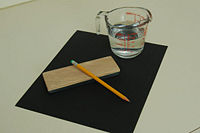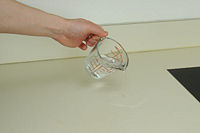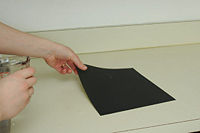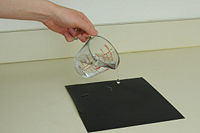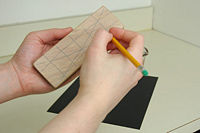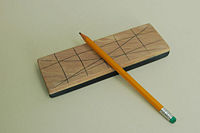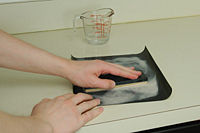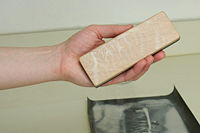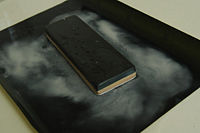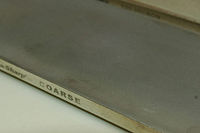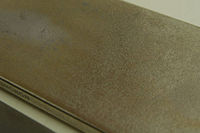Difference between revisions of "Hone Lapping 101"
| Line 32: | Line 32: | ||
Image:Hone_lapping_101DSC_2464.jpg | When the pencil marks are all gone, it's a good idea to draw another grid and repeat the lapping process. Sometimes the slurry from the hone can erase the marks before the surface is completely flat. | Image:Hone_lapping_101DSC_2464.jpg | When the pencil marks are all gone, it's a good idea to draw another grid and repeat the lapping process. Sometimes the slurry from the hone can erase the marks before the surface is completely flat. | ||
Image:Hone_lapping_101DSC_2473.jpg | Once the hone is flat, I use the sandpaper to round the corners of the hone until they feel smooth. Sharp corners on the hone can catch the edge of your razor and dull it. | Image:Hone_lapping_101DSC_2473.jpg | Once the hone is flat, I use the sandpaper to round the corners of the hone until they feel smooth. Sharp corners on the hone can catch the edge of your razor and dull it. | ||
| + | </gallery> | ||
| + | == An Alternative to Sandpaper == | ||
| + | <gallery caption="" widths="200px" heights="160px" perrow="3"> | ||
Image:Hone_lapping_101DSC_2478.jpg | A less messy alternative to sandpaper is using another stone to flatten your hone. I like the DMT line of diamond hones. The 325 grit does a great job of flattening softer hones like waterstones and coticules, and you can use it to hone knives and stuff around the house. | Image:Hone_lapping_101DSC_2478.jpg | A less messy alternative to sandpaper is using another stone to flatten your hone. I like the DMT line of diamond hones. The 325 grit does a great job of flattening softer hones like waterstones and coticules, and you can use it to hone knives and stuff around the house. | ||
Image:Hone_lapping_101DSC_2477.jpg | I also have a 120-grit monster that I use for barber hones. This one is pretty expensive, and it's not good for much else. <p> Norton makes a flattening stone that works well for softer hones. | Image:Hone_lapping_101DSC_2477.jpg | I also have a 120-grit monster that I use for barber hones. This one is pretty expensive, and it's not good for much else. <p> Norton makes a flattening stone that works well for softer hones. | ||
Revision as of 13:12, 28 September 2008
Contents
Background
Most hones don't come with a flat honing surface. Vintage hones are usually worn from use; new hones aren't flat because of the manufacturing process. Before you use any hone for the first time, it's a good idea to flatten it. This is called lapping the hone.
You can do this with minimal investment. I lapped my hones for a long time with just a piece of wet-dry sandpaper and a flat surface to stick it to.
For this tutorial, I'll be lapping a Belgian yellow coticule. This is one of my main workhorse hones, and it hasn't been lapped in a while. I don't have a Norton 4K/8K combo hone, but the procedure is pretty similar with all hones.
Getting started
To start out, I have collected a pencil, some 320-grit wet-dry sandpaper, a glass of water, and my hone. We're going to use a smooth countertop as the lapping surface.
It's important to get good quality sandpaper. Norton and 3M are good brands. Cheap sandpaper could leave particles embedded in your hone.
The first time you lap your hone, I'd suggest starting with sandpaper in the 320 to 400-grit range. This coarse paper will flatten the hone quickly. If you'd like, you can experiment with finishing the honing surface with paper between 600 and 1000 grit. Some guys find that the higher grit papers leave a smoother honing surface.
If you have a Norton hone or other waterstone that requires soaking, place it in a bucket of water for 15 minutes before you start lapping it.
